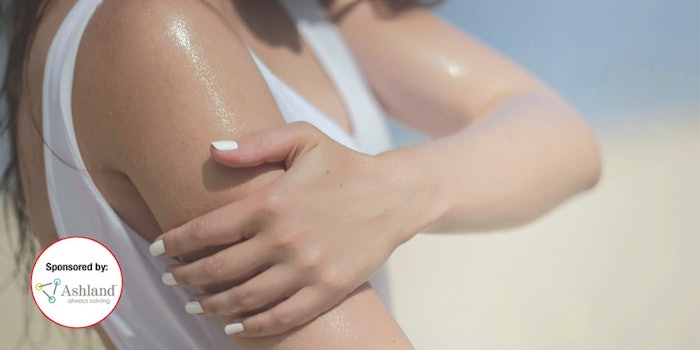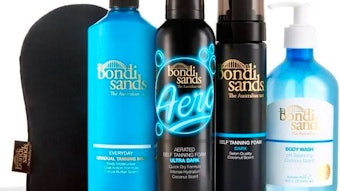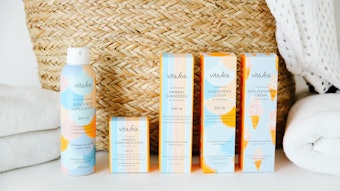
In the northern hemisphere, the month of May typically sees consumers shedding their parkas and reaching for their sunglasses. And, following strict rounds of shelter-in-place orders around the world associated with the COVID-19 outbreak, getting outdoors is more attractive than ever.
At the same time, as consumers grow more aware of the dangers of environmental damage to their skin and the prevalence of skin cancer, they’re reaching for the sunscreen as well.
According to Transparency Market Researcha, the global sun care market is expected to reach $24.9 billion by 2024, growing at an annual CAGR of 5.8%. And, savvy sun care and skin care brands and suppliers are reaping the benefits by offering effective, unique solutions that protect consumers and the environment at higher levels than ever before.
Regulatory Focus: Sunscreen Penetration
First, it’s critical to address the regulatory uncertainty in sun care, particularly around ingredient formula penetration. In the United States, the Food and Drug Administration (FDA) has conducted two tests on commercially available sunscreen formulations to assess absorption into the bloodstream. In both cases, the studies concluded that further research was needed. In the second of the two studies, “Effect of Sunscreen Application on Plasma Concentration of Sunscreen Active Ingredientsb,” a randomized clinical trial was conducted to determine the maximum plasma concentration of six sunscreen active ingredients—avobenzone, oxybenzone, octocrylene, homosalate, octisalate and octinoxate—from four commercially available sunscreen products—a lotion, an aerosol spray, a nonaerosol spray and a pump spray.
The latest report concluded, “Sunscreen active ingredients are systemically absorbed, which supports the need for additional studies to determine the clinical significance of these findings.”
In response, both the Personal Care Products Council (PCPC) and Consumer Healthcare Products Association (CHPA) stated, “All six sunscreen active ingredients were absorbed and found in plasma following application in either lotion or spray form. However, the presence of these ingredients in plasma does not suggest a safety issue and there were no serious drug-related adverse events reported in the trial, consistent with the excellent safety record associated with sunscreen active ingredients over decades of real-world use. We will continue to work cooperatively with FDA to determine what additional studies are needed to ensure the ongoing safety of sunscreen active ingredients in the marketplace.”
The PCPC and CHPA also noted, “Sunscreen is a crucial step in the fight against skin cancer and premature skin aging. It is our hope that using sunscreen becomes as much of a habit as using a seat belt. We look forward to our continued work with the FDA to ensure that consumers have access to products containing a broad variety of sunscreen active ingredients.”
A recent report from Rachel Grabenhofer, managing editor of Cosmetics & Toiletries magazine, featuring insights from Howard Epstein, Ph.D., director of technical services at EMD Chemicals, explained that “the FDA’s latest sunscreen scrutiny is focused on the test protocol for the Maximal Usage Trial study (MUsT). This human pharmacokinetic test measures the amount of absorption of a drug into the body … Industry critiques of the FDA study, however, underlined that FDA researchers did not examine the effects of different product forms, vehicles and potential penetration aids in product formulas; it is unclear from the university study’s article abstract whether researchers factored these elements into their equation, or not. Per Epstein, additional FDA studies are now under way to elucidate the effects on penetration of these facets of sunscreen formulas.”
Getting a sense from the report’s researchers about what actually may have enhanced the penetration of actives “could be an opportunity for formulators,” Epstein concluded.
Sun Care: Holistic Defense
As awareness of the dangers of sun exposure, melanoma and environmental damage continues to climb, consumers are increasingly regarding sunscreen as an essential part of daily overall wellness, rather than just a summertime staple.
Government initiatives are helping spread the message. In the United States, the Centers for Disease Control is in the tail end of its Healthy People 2020 initiativec, which aims to increase regular sunscreen usage among Americans. The group exceeding the goal by the highest percentage is women over the age of 25. This is unsurprising because this group is among the key users of daily protective skin care products and cosmetics.
Clarins has long been known as a forerunner in skin care, and its My Blend line is no exception. A star performer within the line is the City Veil compact, featuring 100% mineral sunscreens, mango tree extract, hyaluronic acid and an antipollution compound of white horehound, Furcellaria and Lapsana. Also unique to the product is its compact, featuring a patented airless system that descends in order to deliver the cream, as well as a 100% silicone sponge.
“We wanted to respond to the expectations of the urban consumer, both through the formula—by moisturizing her skin and protecting it from the effects of pollution and the sun—and the product’s practicality,” explains Servane Lescop, director, My Blend. “This compact offers several advantages, like its silicone sponge, which is more hygienic than a sponge version. It can be easily cleaned every day with just a little soap and water.”
Sunscreen Goes Clean
As with all personal care and cosmetic products, consumers are paying closer and closer attention to the labels and educating themselves about the ingredients inside. And when it comes to sun care, they’re looking for sustainable, effective ingredients—and the fewer, the better.
Leading sun care brand Australian Gold has taken this sea change to heart by reformulating its classic line. The brand eliminated oxybenzone and octinoxate from its products, as research has shown the two ingredients may negatively impact coral reefs and have been banned in several coastal cities around the world, as well as some U.S. states.
“Since the conception of our new reformulation and the priority of minimizing the chemical activities utilized, Australian Gold has made huge steps forward towards expanding existing products and launching innovative collections, such as the Sport Ultra Chill and the new Botanical Tinted Face Mineral Lotions Shades,” says Kristen Steinbrook, associate director of research and development, Australian Gold.
One brand using zinc oxide to the fullest extent is Megababe, which recently launched its Beach Paint, a product designed to protect against the dreaded “melasma mustache.”
Says Megababe founder Katie Sturino, “Beach Paint uses zinc oxide to create a thick barrier that effectively blocks the sun. While zinc oxide is common in mineral sunscreens, the difference here is that Beach Paint uses a really high percentage—25%—to turn it into an opaque paint. Applied in a thick layer, it hides your skin from the sun and from melasma.”
Not only is the product highly effective, Sturino adds that it meets a need that had been stigmatized for years.
“Beach Paint is one of my favorite products in the line because it really solves a problem, and it makes me happy that we’re talking about an issue that women don’t really get to hear about,” says Sturino. “That’s the ethos behind our whole brand—making women feel more comfortable and less alone!”
After Sun
While brands can offer all the possible sun protection in the world, the fact remains that sunburns will continue to occur, and some consumers will rely on cures rather than preventatives. Therefore, opportunities abound to create soothing after-sun products that tick all the boxes on today’s consumer checklist.
For example, Jojoba Desert’s JD Jojoba Oil is available in formats ranging from butter and vegan butter to aqua-cream and oil-cream bases. This natural, sustainably-sourced solution features anti-inflammatory properties to relieve the pain and swelling of sunburns.
“As JD Jojoba Oil contains vitamin E and omega 9, it helps restore the skin’s moisture and balance, and acts as a key ingredient in nourishing after-sun products to immediately soothe the skin from the stinging of a sunburn,” explains Lee Reuveni, CEO of Jojoba Desert. “The skin-repairing properties innately found in jojoba oil open up a world of possibilities for its applications.”
Disrupting Sun Care
Looking to the future, brands are increasingly focused on reshaping the sun care sector with technology. To illustrate, during the 2020 CES trade show, Samsung’s team showed the Ultra V, a wearable UV radiation sensor that can track an individual’s exposure over time. The technology is in the same vein as My Skin Track UV from La Roche-Posay, a clip-on battery-free sensor that provides consumers with instant status updates on both UVA and UVB exposure.
A new entrant into this disruptive moment is Lumasol, an FDA-approved refillable SPF product that is designed to be on-the-go. The product’s launch has been delayed due to the global pandemic but will eventually be available via a direct-to-consumer subscription system.
Lumasol (images of which have not been released as of this writing) offers SPF 50+ defense that can be applied via a lightweight mist that won’t smudge makeup. The packaging, meanwhile, acts as a barometer of UV exposure by changing color to remind users when to reapply.
Lumasol CEO, Sophia Hutchins, has closed $3 million in seed funding from Pathfinder at Founders Fund and Greycroft Ventures. Seeking to “millennialize” sun care with a lifestyle concept, Hutchins spent nine months developing the system at a Silicon Valley accelerator. Following the launch of the subscription model, Lumasol will consider a brick-and-mortar partner.
The system’s refillable engine reportedly uses 10 ml glass vials that are traditionally used for fragrance. When the engine is exposed to UVA and UVB rays, its outer shell shifts in color, prompting the user to reapply. The system can detect exposure indoors and on overcast days. No single-use plastic is used for any part of the design, according to the brand.
Meanwhile, the fragrance crossover also applies to the viscosity of the product, which is designed to issue as a fine mist from the vials. The vegan formulation itself is 80% organic and features chemical SPF, according to Hutchins. The brand specifically avoided oxybenzone, which has been flagged in some research as causing harm to coral reefs.
The brand’s go-to-market strategy is focused on education, says Hutchins, particularly regarding the need for reapplication, as well as the anti-cancer and anti-aging benefits of wearing SPF in an age of a depleted ozone layer.
Lumasol 2.0 will feature a tech component, says Hutchins, who adds the component, currently under development, will be heavier and considered a medical device.
Indeed, a world of possibilities are out there for brands looking to enter the sun care game or take their presence within it to the next level.
Lisa Doyle was formerly the associate editor of Global Cosmetic Industry and is a freelance writer in the Chicago area. Her work has also appeared in Skin Inc., Salon Today, Modern Salon, Master Barber and Writer’s Digest.
Captions/Footnotes:
awww.transparencymarketresearch.com
bhttps://jamanetwork.com/journals/jama/article-abstract/2759002
cwww.cdc.gov/dhdsp/hp2020.htm











